An artist's conception of Deep Space 1
Click on image for full size
Image courtesy of NASA
NASA Tests New Technologies with Deep Space 1
News story originally written on October 25, 1998
NASA launched a spacecraft called Deep Space 1 that is going to test
twelve new technologies. Among the twelve are a different type of engine
and a smart navigation system. The spacecraft will test the equipment
while it flies to a nearby
asteroid.
The engines use xenon gas as a propellant. Solar panels collect the sun's
energy and use it to give the xenon gas an electric charge. The gas is
then accelerated through an electric field to speeds around 65,000 mph.
The thrust that is produced is less than the weight of a piece of paper
but it will still accelerate the spacecraft about 20 mph each day. It's
speed will continually build up because there isn't any air resistance in
the vacuum of space. The ion-propulsion engines are ten times more
efficient than
regular rocket
engines.
Deep Space 1 will also have an onboard navigation system. It will keep
track of a number of stars and be able to calculate its position.
Before, spacecraft had to rely on people at NASA to tell them where they
were. The craft will also determine how close it can safely fly to the
asteroid.
If everything goes well with the asteroid flyby, the mission may be
extended to include flybys of two nearby
comets.
You might also be interested in:
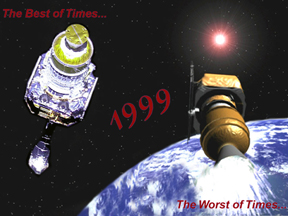
It was another exciting and frustrating year for the space science program. It seemed that every step forward led to one backwards. Either way, NASA led the way to a great century of discovery. Unfortunately,
...more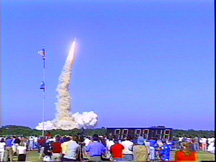
The Space Shuttle Discovery lifted off from Kennedy Space Center on October 29th at 2:19 p.m. EST. The weather was great as Discovery took 8 1/2 minutes to reach orbit. This was the United States' 123rd
...more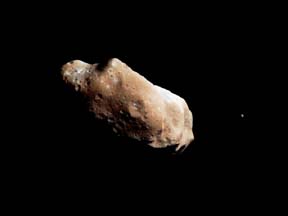
A moon was discovered orbiting the asteroid, Eugenia. This is only the second time in history that a satellite has been seen circling an asteroid. A special mirror allowed scientists to find the moon
...more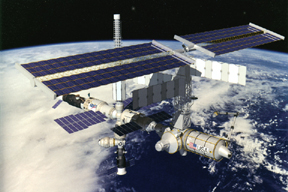
Will Russia ever put the service module for the International Space Station in space? NASA officials want an answer from the Russian government. The necessary service module is currently waiting to be
...more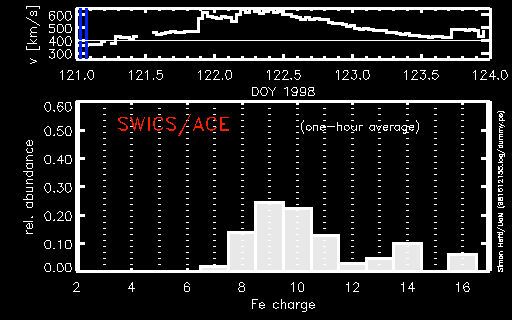
A coronal mass ejection (CME) happened on the Sun early last month. The material that was thrown out from this explosion passed the ACE spacecraft. The SWICS instrument on ACE has produced a new and very
...more
J.S. Maini of the Canadian Forest Service called forests the "heart and lungs of the world." This is because forests filter air and water pollution, absorb carbon dioxide, release oxygen, and maintain
...more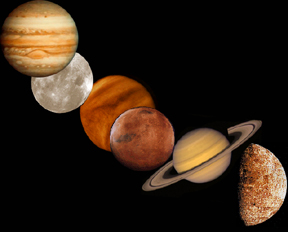
In late April through mid-May 2002, all five naked-eye planets are visible at the same time in the night sky! This is includes Mercury which is generally very hard to see. You won't want to miss this!
...more









